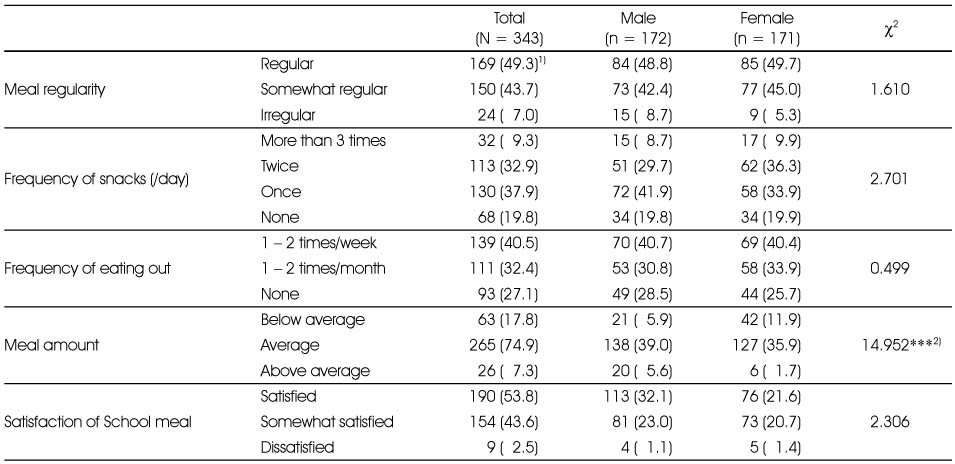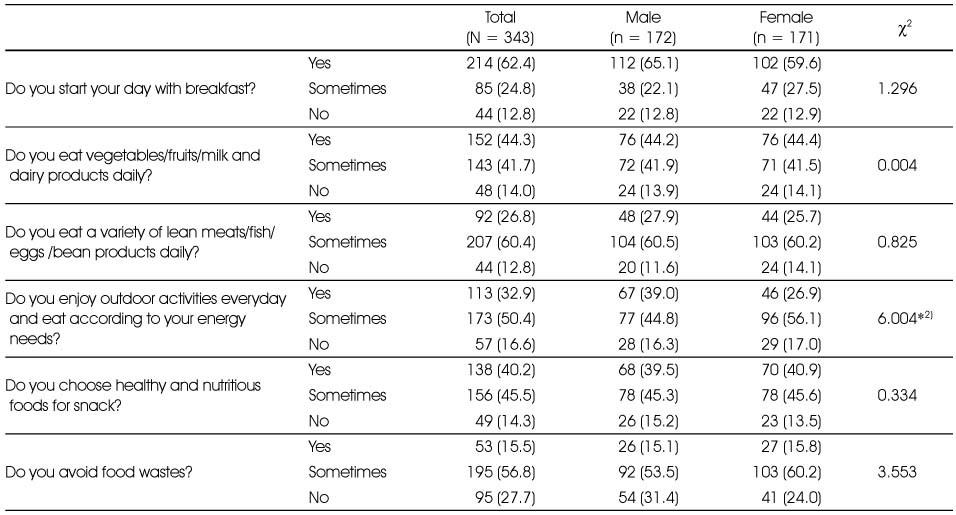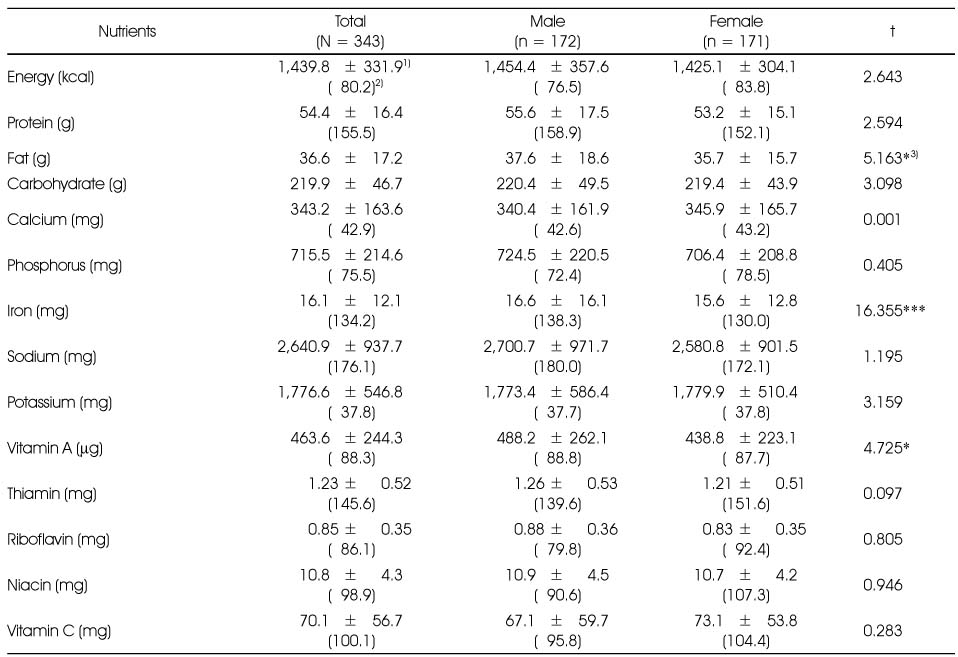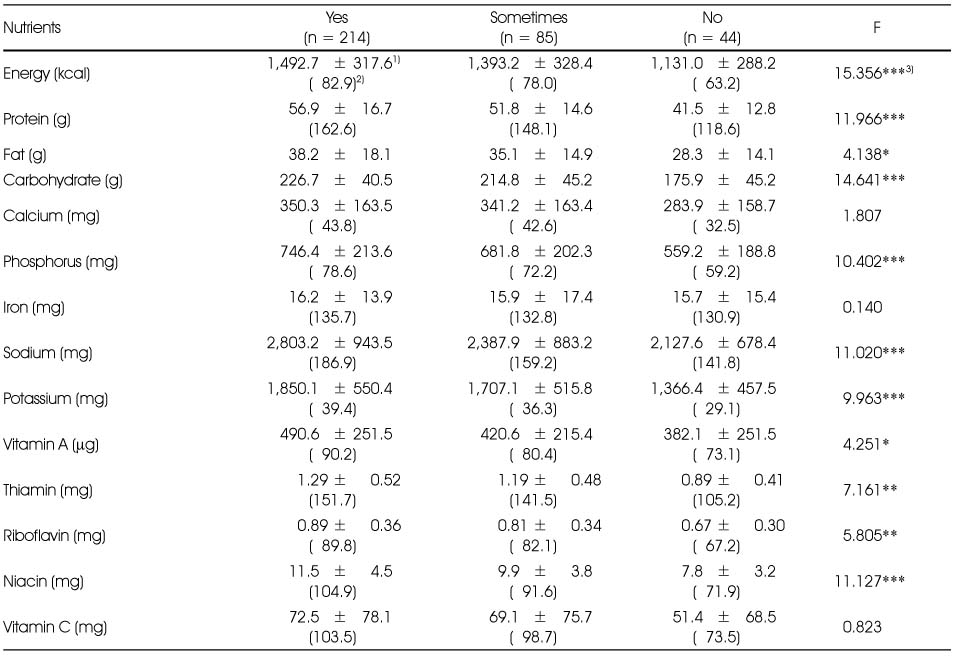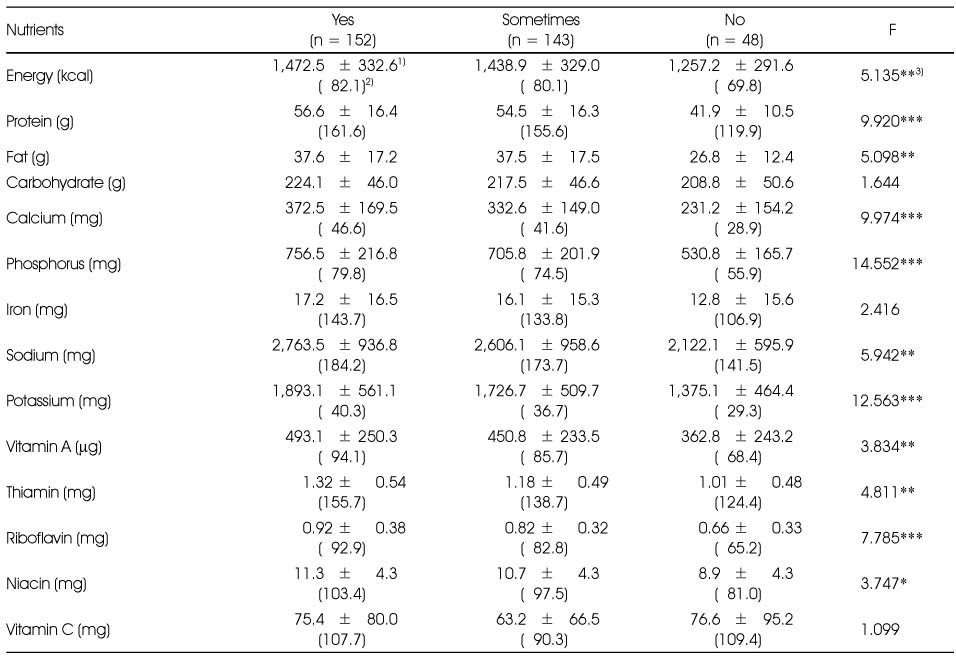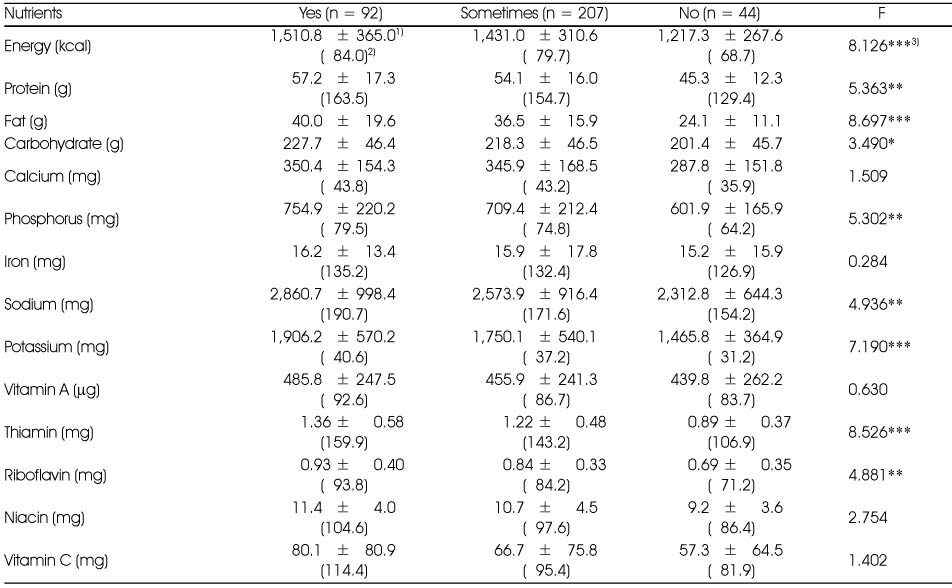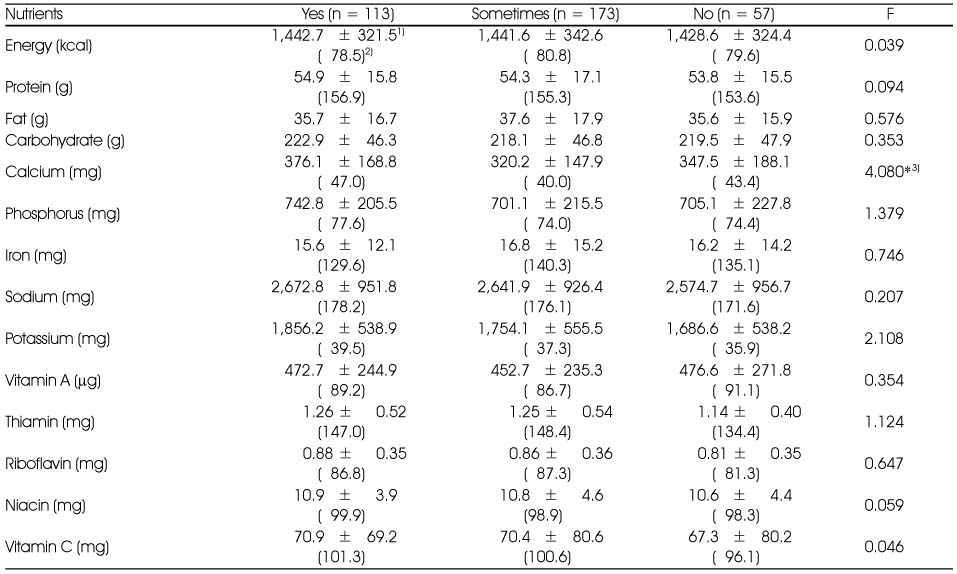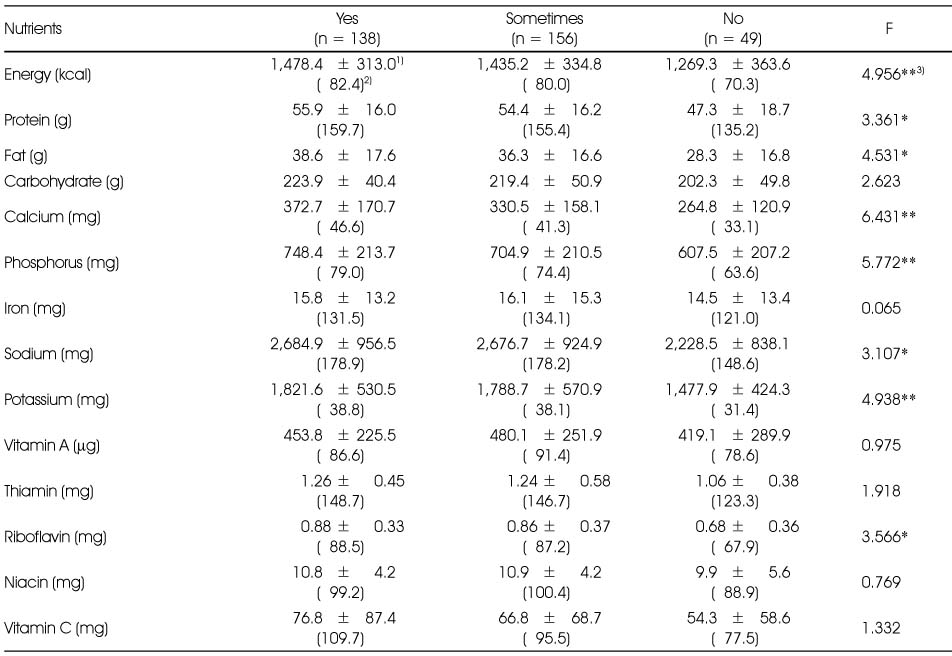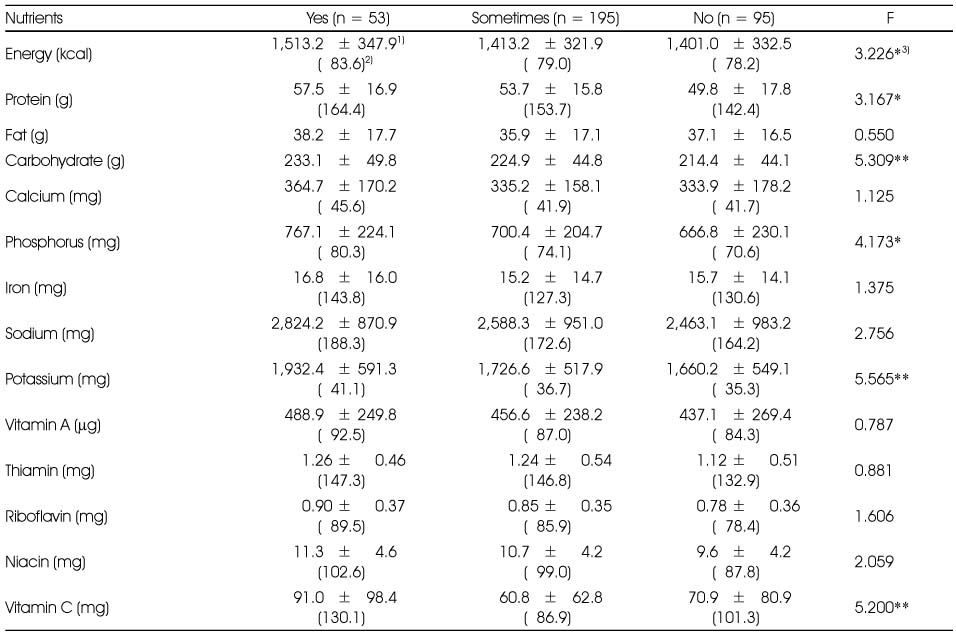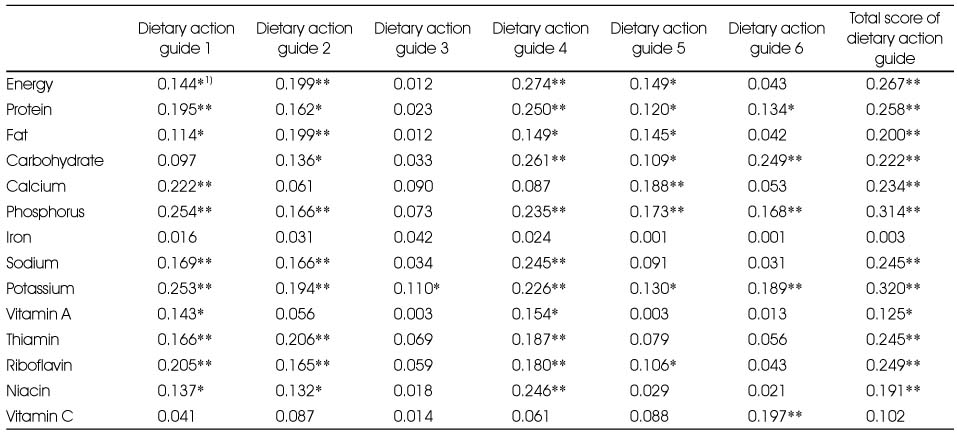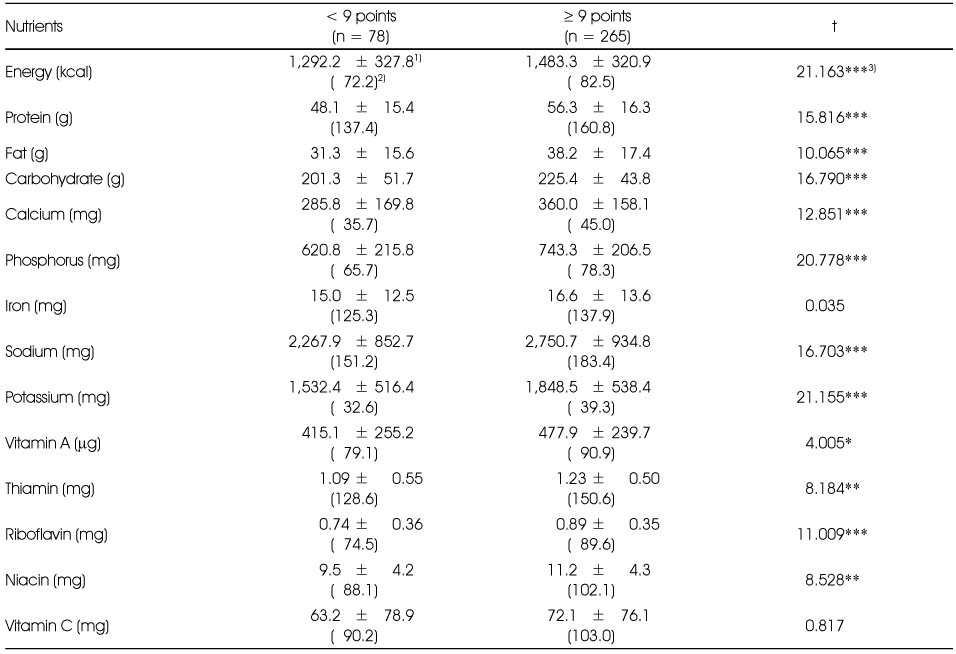References
1. Chang HS. The assessment of diet quality according to exercise practices of middle school students. Korean J Exerc Nutr 2004. 8(3)295–301.
2. Chung SJ, Lee Y, Kwon SJ. Factors associated with breakfast skipping in elementary school children in Korea. Korean J Community Nutr 2004. 9(1)3–11.
3. Ha JS, Lee HG. Effects of middle-school student's food behavior on health condition and degree of school accomplishment. J Korean Home Econ Assoc 1995. 33(3)225–242.
4. Kim BH, Park BC, Lee SJ. Relationship among consumption frequency of snacks containing trans fatty acid, food behaviors, body composition, and nutrient intakes of adolescents living in Kwang-ju area. Korean J Food Cult 2008. 23(3)410–419.
5. Kim BR, Cho YE. A study on the evaluation of food intake of middle school students in Kangneung. J Korean Soc Food Sci Nutr 2001. 30(5)986–992.
6. Kim GM, Lee SY. The study on nutritional knowledge and eating behavior of elementary school senior students in Incheon area. J Korean Diet Assoc 2000. 6(2)97–107.
7. Kim SY, Lee HJ. The influence of food habits on nutrient intake and body mass index in elementary school students in the Gyeongnam area. Korean J Community Nutr 2007. 12(6)705–713.
8. Kim YH, Jang MR. A research on analysis of eating habits and textbook contents for efficient nutrition of elementary school students in Gangneung city. J Korean Diet Assoc 2007. 13(4)379–388.
9. Kim YO. Identification of the dietary intake patterns of Korean adults according to their exercise levels. Korean J Community Nutr 2002. 7(6)769–778.
10. Korean Nutrition Society. Dietary reference intakes for Koreans 2005.
11. Ko YJ, Kim YN, Mo SM. A study on eating behavior of middle school third grade students. Korean J Nutr 1991. 24(5)458–468.
12. Ku PJ, Lee KY. A survey on dietary habit and nutritional knowledge for elementary school children's nutritional education. Korean J Food Cult 2000. 15(3)201–213.
13. Lee JE, Jung IK. The perception of parents on the eating habits and nutritional education of their elementary school children. J Korean Home Econ Assoc 2005. 43(7)67–77.
14. Lee JS, Chang KJ. The relationship between the diversity of food Intake and nutrient intake among Korean college students participating in a nutrition education class via internet. Korean J Community Nutr 2003. 8(5)689–698.
15. Lee SS, Choi IS, Oh SH. The eating behavior and nutrient intakes of third grade primary school children in Kwangju. J Korean Soc Food Sci Nutr 1999. 28(5)1172–1179.
16. Lim HJ. Assessment of dietary intake of preschool children in Busan; Assessment based on food group intake. Korean J Community Nutr 2001. 6(1)3–15.
17. Ministry of Health and Welfare. Revision of Dietary Guidelines for Koreans (2003: dietary action guides for infants & toddlers, pregnant & lactating women, children, and adolescents) 2003. 22–28.
18. Ministry of Health and Welfare. Revision of Dietary Guidelines for Koreans-. Infants, Children, and Adolescents 2010.
19. Ministry of Health and Welfare. National Health and Nutrition Survey-Nutrition Survey 2006. 32–33.
20. Moon SJ, Lee MH. An effect of children's food attitude on nutritional status and personality. Korean J Nutr 1987. 20(4)258–271.
21. Park HO, Kim EK, Chi KY, Kwak TK. Comparison of the nutrition knowledge, food habits and life style of obese children and normal children in elementary school in Kyeong-gi province. Korean J Community Nutr 2000. 5(4)586–597.
22. Sung CJ, Sung MK, Choi MK, Kang YL, Kwon SJ, Kim MH, Seo YL, Adachi M, Mo SM. An ecological study of food and nutrition in elementary school children in Korea. Korean J Community Nutr 2001. 6(2)150–161.
23. Sung SJ, Kwon S. Effect of eating with family or alone on the self-rated mental or physical health -The elementary school children in Daejeon area. Korean J Community Nutr 2010. 15(2)206–226.
24. Wang SG. Prevalence of obesity, food habits, and daily nutrient intakes of 4th grade elementary school students in Daejeon. Korean J Hum Ecol 2007. 16(3)631–642.
25. Yoon HS, Yang HL, Her ES. Effect of nutrition education program on nutrition knowledge, dietary diversity of elementary school children. Korean J Community Nutr 2000. 5(3)513–521.
26. You JS, Choi YJ, Kim IS, Chang KJ, Chyun JH. A study on prevalence of obesity, eating habits and life style of 5th grade students in Incheon. Korean J Community Nutr 1997. 2(1)13–22.
27. Yu OK, Park SH, Cha YS. Eating habits, eating behaviors and nutritional knowledge of higher grade elementary school students in Jeonju area. Korean J Food Cult 2007. 22(6)665–672.

